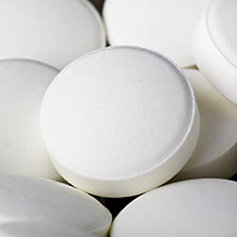History of Barbiturates

Chemists and physicians have always been seeking chemical compounds that are characterized as hypnotics, or sleeping compounds. The original “drugs” that met this requirement were alcohol, which was used for centuries. Toward the end of the 19th century, with the beginning of discoveries in chemistry, doctors were prescribing compounds such as paraldehyde, chloral hydrate and bromides. It is documented that in the 1830s, the wife of Abraham Lincoln, Mary Todd Lincoln was given chloral hydrate for her sleep problems.
By the end of the 19th century, chemistry was advancing to a level where it began extracting and combining compounds to make new drugs that were used experimentally in humans to establish their effects in the hopes of finding cures for various maladies of life.
The history of the development of barbiturates is as bizarre as the effects of the drug itself and its consequences in history. Its founder was a German chemist, Adolph von Baeyer, the person who founded Bayer Chemicals Company, which is still a major manufacturer of analgesics and well-known and criticized for many of its pesticides and fertilizers.
In 1864, he was working on the synthesis of a drug using urea and malonic acid, a chemical found in apples. This synthetic drug became known as barbituric acid, named after St. Barbara’s Day because the day he discovered the drug, he had stopped into his local tavern to celebrate Saint Barbara’s birthday. In those days, chemists didn’t have many methods of testing drugs other than tasting their discovered compounds and seeing what effects they had on themselves or their employees.
In this case, there were no signs of any therapeutic significance in his discovery. However, in 1903 he and two other chemists in Germany altered the compound and created a psychoactive drug named “barbiturate”. When given to humans, it induced sleep and was one of the first hypnotic drugs. (A term used to generically categorize chemicals that induce sleep.) Mr. Baeyer became famous and his established chemical research won him the Nobel Prize in chemistry in 1905.
As with many of these inventions, the desire to market the drug overshadowed the appropriateness of the compounds, a problem still prevalent today. In this case, the original barbiturate-induced sleep, but it metabolized slowly, meaning that a person was sleepy and under its influence long after the desired eight hours of sleep. In 1912, other chemists developed phenobarbital, which is still used today. It was found that it helped lessen the severity of seizures. To counteract the overpowering sleepiness, they merely added amphetamines to the mixture and the drugged feeling was covered up by the “speed” effects of amphetamines.
Over the course of the 20th century, more than 2,500 barbiturates were synthesized and about 50 of these were eventually used clinically. Some more common modifications of the drug led to many drugs of abuse in the mid 20th century such as Amytal, Nembutal, and Seconal. These are a few of the most popular drugs of that day, abused by many and credited for the overdose deaths of thousands, including Marilyn Monroe and Elvis Presley.

These drugs are rarely prescribed as “sleeping pills” by physicians today, but phenobarbital is still on the market and used and abused by many, mostly because its patent has expired and it is very inexpensive. As these compounds were modified, they have led to the discovery of some of the most abused drugs on the market today, benzodiazepines, including Valium and Xanax, with many of these bringing in huge pharmaceutical profits under their recent patents.
Society has always been receptive to buying any remedy for sleeplessness, and the easiest marketing, with the least amount of personal responsibility, has come from chemical compounds that induce sleep quickly, called hypnotics or sedatives. Under a doctor’s suggestion or orders, people will take these types of drugs without being overly concerned about how long the effects may last, or the synergistic effects (meaning how the drug, when combined with other drugs, commonly alcohol, will cause a multiplying of its effects and can cause death), or whether they may be addicting. In the case of barbiturates, they are very addicting and cause many undesirable side effects and are considered a Schedule II pharmaceutical, which is equal to the most dangerous and addicting drugs that are allowed to be prescribed in the U.S.
Barbiturates could be considered the first of the psychiatric medications. Before the development of these drugs, psychiatrists did use chloral hydrate and other such drugs to induce sleep, but with the introduction of barbiturates, psychiatrist began using the drugs intravenously to “help” overcome inhibitions and facilitate their treatment. Since that time, it has been recognized that drugging to cover up these feelings is not sustainable treatment but only masks underlying causes.
In viewing the history of barbiturates, it is easy to see the progression of pharmaceutical companies offering drugs that elicit responses in humans that relieve them of any responsibility for handling their own emotions and feelings. Barbiturates were among the drugs that led to a generation of serious drug abusers in the “beat” generation of the 1950s and the “hippie” generation of the late 1960s. Many of those who used these drugs were sold on the idea that life can be better through chemistry.
The truth is that there are no chemical shortcuts. For an individual to recover from drug dependency requires them to learn or relearn to be fully responsible for their own lives rather than looking to drugs to absolve them of responsibility.
 ®
®